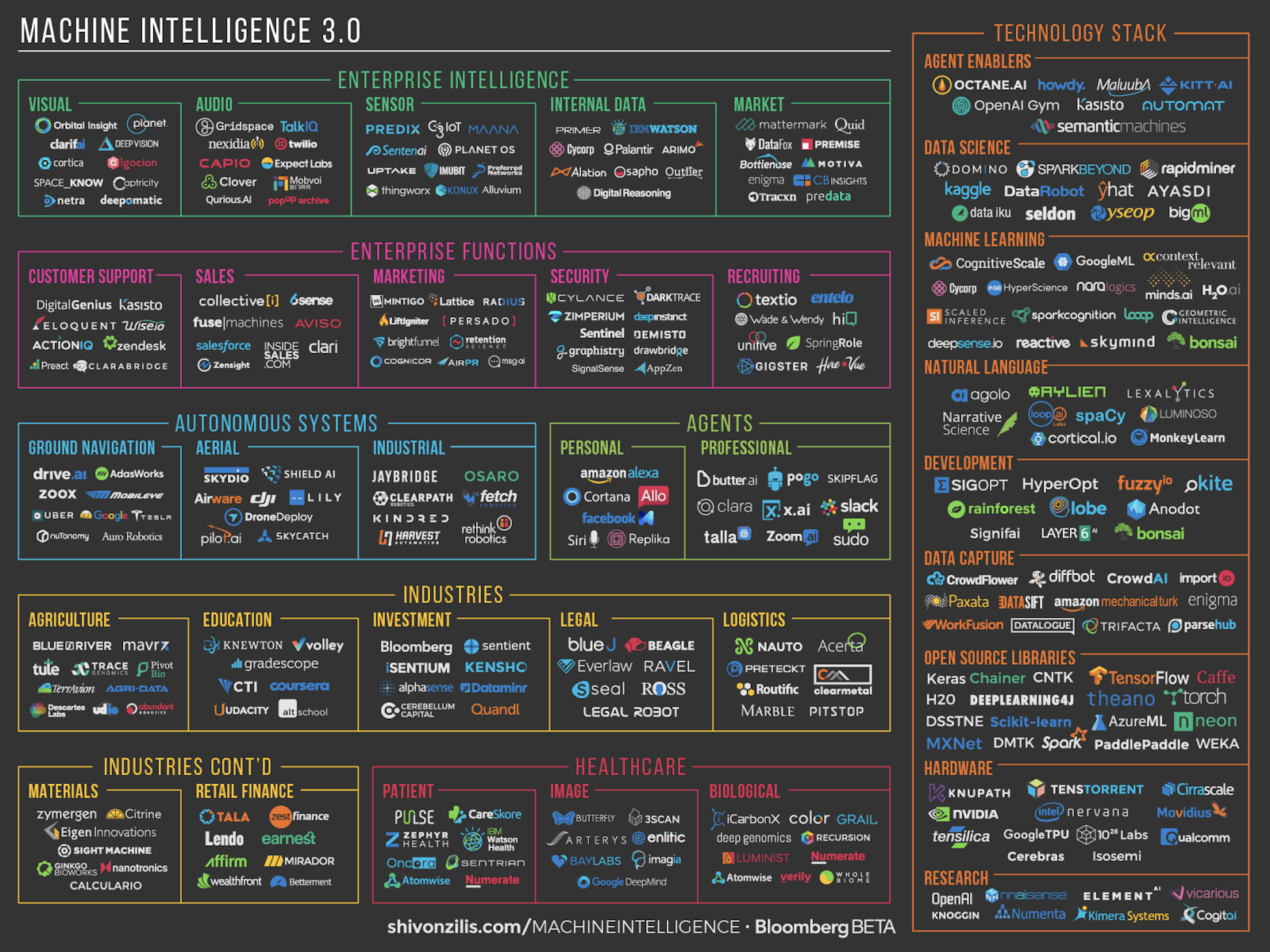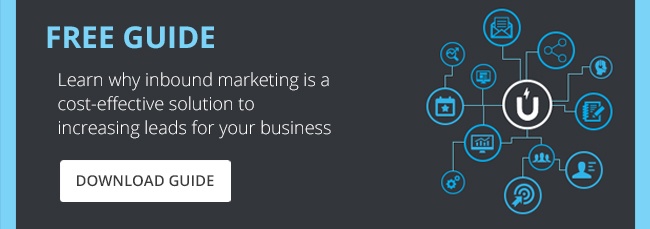
AI is all the rage on tech websites, but it can still seem like a pretty inaccessible tactic for B2B companies.
The hype and expectations of AI are huge, yet the actual business impact it can have on B2B companies at this moment is still relatively uncertain. However, one thing sure, AI technology is advancing faster than most of us will ever be able to keep up with.
Preparing a foundation for AI now will end up paying dividends down the road.
Here, I’ll focus on two things that will play a critical role in obtaining a competitive edge with AI both now and in the future - simplifying your internal tech landscape, and advancing your team’s ability to handle more cognitive work that will arise through AI augmenting growth.
Before you go ahead and jump into laying out an AI roadmap, it’s important to first consider your overall business strategy. Setting out an AI roadmap without first truly understanding where you want to go or what you’re trying to do will lead to many more complications down the road.
Establish an overarching strategy.
Strategy means different things to different people, and laying out a solid plan that everyone can work off will be an important first step. Coming up with a broad strategy that each key department can agree on will start building a strong foundation to launch off of.
When it comes to finding areas where AI can have a large impact, ask yourself the following questions:
- What are your vulnerabilities?
- How would start-ups disrupt you?
- What areas would they specifically target?
Initially look at your internal processes from both a technological and inter-departmental standpoint. This is where most organisations tend to get over complicated. The key here is to strive for simplicity. This will be important when it comes to quickly adopting cutting edge technology in a way that will give you a competitive edge over other companies.

What does simplicity look like? Try for something that every department can understand, not just IT. AI will play a role in every area of the organisation, so having processes and a technology landscape that people can grasp will make it easier for AI adoption when the time comes.
Train the entire organisation on the basics of this interconnected infrastructure, and then offer opportunities for theoretical innovation from each department. Ask for ideas, solution providers, ways to simplify tasks, ideas for removing inefficiencies and increasing productivity. Have a reoccurring feedback loop where you can gather up-to-date information on what your departments feel will help them exceed. People will be much more forthcoming when they have a good understanding of how the organisation operates and what could be needed.
Building out a tech landscape that everyone can understand at a basic level will be difficult, but this is critical to opening up opportunity for innovation in every part of the organisation. When evaluating software and platforms, think hard on how these technologies align your departments (or divide).
While most AI tech coming out right now will be very specific to the department, there will certainly be more aggregated platform plays in the future. Adopting AI onto one of your existing platforms (that covers three to four departments) and works by one set of internal rules will be much easier than trying to layer AI onto individual departmental platforms that are siloed throughout the organisation and all have different sets of rules.
These changes will also help streamline more effective communication and allocation — an area AI will play a massive role in. Examples of AI augmenting human capabilities could look like the following:
- an employee engaging an internal bot to find critical information specific to their job
- a sales person rapidly creating custom/personalized content for a specific prospect
- a social messenger or web-based AI bot, aiding customers with on-demand real-time enquiries for quicker solutions or more streamlined and dynamic hand-over to sales teams
- a content strategist figuring out exactly what topics will drive the most traffic from AI tech
- a new hire being guided through a custom on-boarding program assisted by AI
Your team is the key to capturing growth via AI.
Creating an overarching strategy that effectively ties in all departments with a simplified tech infrastructure is a great start. Having everyone from each department understand those interdependencies while embedding a constant loop of communication will allow for more ideas on innovation (many of which will be driven by AI). The next step is preparing your team so that they’re not just ready to come up with theoretical innovations — they’re ready to drive them.
Note: things will not necessarily get easier as a result of AI handling menial tasks. Sure, the fluff of our daily jobs will likely start to fade away. Tasks that once used minimal brain power will soon fall under AI, as they’re the easiest to process. However, with that, the demand for humans to consistently perform higher cognitive tasks will vastly increase. Try creating a more interconnected culture where people are working on all sorts of different challenges, even outside of the department they work for.
Here’s a few ideas you could try with your team:
- Regularly meet to discuss organizational challenges you face as a leader.
- Ask for feedback on how other areas of the organization could run more effectively.
- Create micro-leadership opportunities for people on your team to do things that normally wouldn’t fall under their job scope
- Promote more content consumption and create opportunities to apply what they’re learning via special projects
- Push your team to regularly network with other departments and promote career opportunities throughout the overall organization
By adopting both a culture and organisational framework that allow individuals to initiate innovation and change, you’re taking the first step to preparing a foundation for AI.
AI is just getting started. Curious about how AI can help you drive smarter decisions and create more personalised customer experiences. Click here and Get Started!
Written by Glenn Miller
An exceptionally experienced digital marketer, proactive and future-forward thought leader, I deliver exceptional customer experiences, industry leading digital strategy and superior marketing results.
SUBSCRIBE TO OUR BLOG
SUBSCRIBE TO OUR BLOG
Popular
Categories
- Inbound Marketing (94)
- Digital Marketing Strategy (85)
- Content Marketing (27)
- Lead Management (27)
- Business Growth (26)
- HubSpot (25)
- Artificial Intelligence (AI) (22)
- Marketing Automation (20)
- CRM (19)
- Email Marketing (16)
- Sales Enablement (13)
- Referral Marketing (12)
- Customer Relationship Management (CRM) (11)
- Social Media Marketing (8)
- Blogging (7)
- Buyer Personas (7)
- Buyer Journey (6)
- Growth Driven Website Design (6)
- HubSpot Product Feature Updates (6)
- Goal Setting (5)
- Paid Media (4)
- content strategy (4)
- SEO (3)
- Influencer Marketing (2)
- Sales & CRM HUG ANZ (2)
- Conversational Marketing (1)
- Legal practice management software (1)
- User Management (1)
- training (1)



